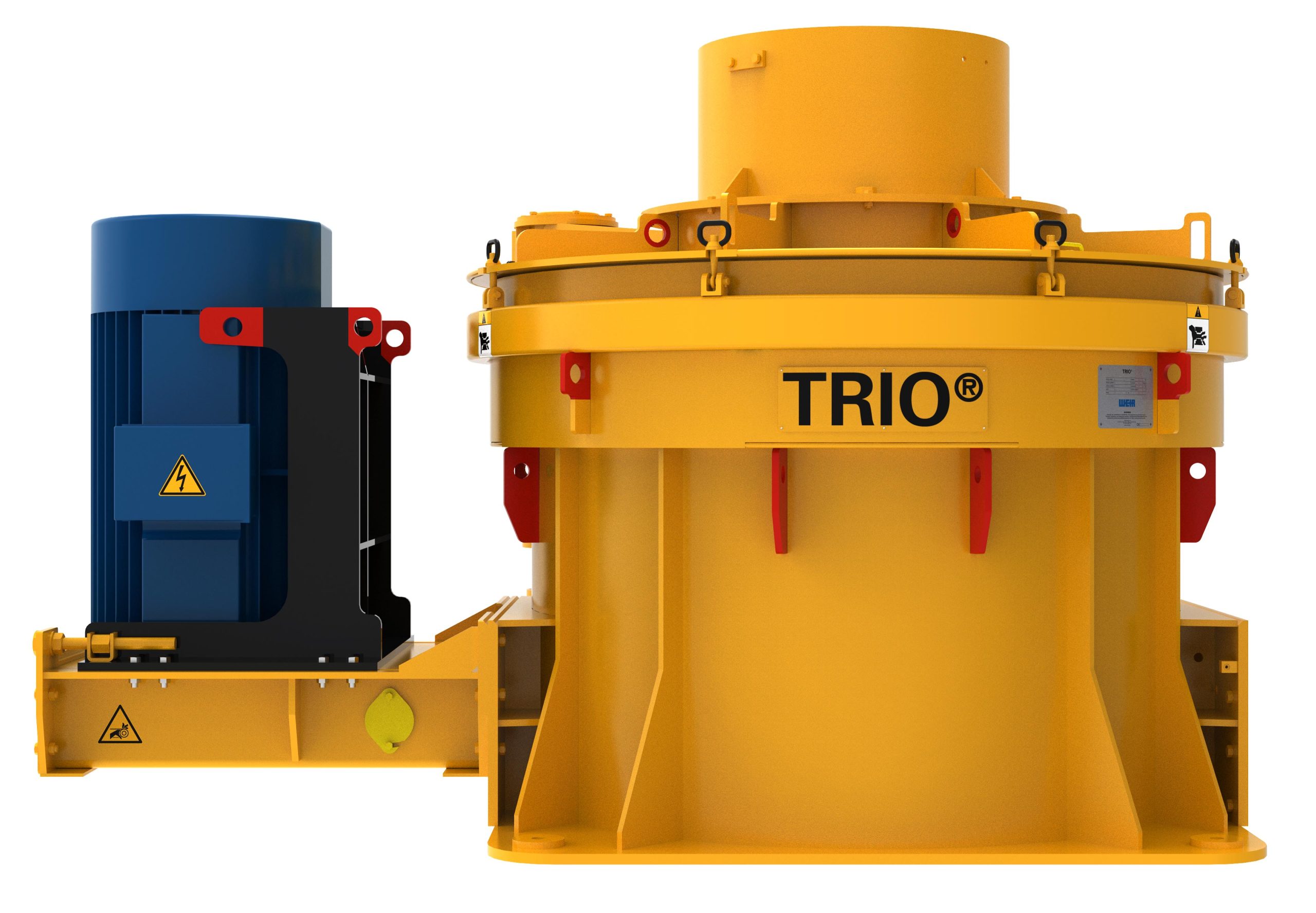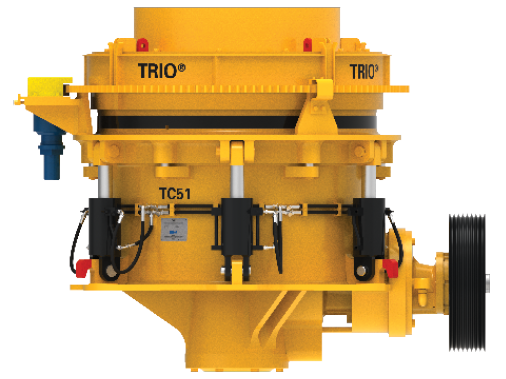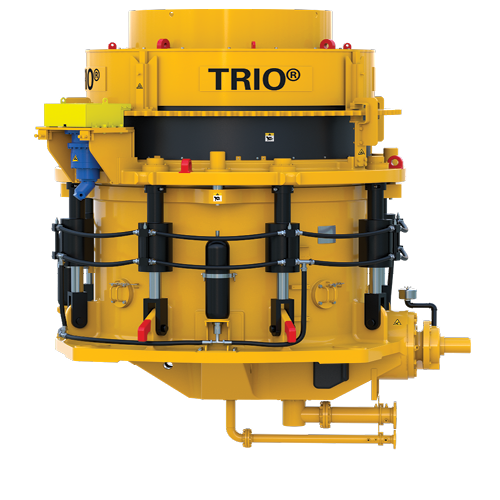by Eric Jones

Crushers are designed to ingest and break some of the most abrasive materials on earth – to the detriment of their internal wear parts. They are engineered to operate on the frontline and perform within some of the harshest environments. When it comes to the success and reliability of a process, your company’s servicing and spares strategy is critical and can significantly impact production efficiency, safety and profitability.
When we sell processing equipment to mines and quarries, we often find it is classified as “mission-critical,” meaning the failure of this machine can stop the production of the entire site. The availability of high-quality wear parts can be the difference between the success and failure of an entire project. Here, we examine some key points to consider when designing a spares and wear parts strategy.
Material – Focus on the Recipe, Not Individual Ingredients
The combination of materials used in crushing parts plays a critical role in their success or failure when installed. Manganese is a favored alloy for those operating cone and jaw crushers due to the material’s work-hardening properties.
As rocks meet the outer layer of the manganese, its exterior toughens while its interior remains soft. This combination of toughening exterior and flexible interior means the part is harder to wear down during typical operations and can navigate higher impact blows.
Shape is Key
The shape of jaw crusher wear parts often determines if the jaw die will experience equal or unequal wear throughout the plate, impacting the overall efficiency of your crusher. The mold, including the tooth profile, must be designed for your application and the material you are crushing.
The tooth pattern must be designed to properly grip your chosen feed, enabling your crusher to process the material as efficiently as possible. This is a delicate balance as the die must offer enough wear material to ensure the maximum life of the part while keeping weight to a minimum and safeguarding against excessive wear material, which reduces the overall capacity or closed side setting of the crusher.
The shape of the valleys between each tooth must also be carefully considered. If the shape is not suited to your application, rocks can become lodged, clogging your die and putting the crusher under unnecessary stress during operation.
Whenever possible, the equipment’s manufacturer should evaluate your application and examine any worn parts to recommend different jaw features and customisations which could increase wear life, boost production, and ensure even wear or alter your product size. The wear parts should be designed using your old part’s successes and failures and made specifically for your application.

Unlocking Your Crusher’s Capabilities
Operators are often surprised when they find their crusher has untapped potential.
Take the Trio TV series vertical shaft impact crusher (VSI), for instance, which is a popular crusher when creating manufactured sand. The VSI is fed from the top, and the material is guided into a high-speed rotor. It is then accelerated, application dependent to 45 to 75 m/s, and discharged into an “impact zone.” Here it is broken along its natural fracture lines as it comes into contact with other feed material rebounding from the walls of the chamber or anvils installed inside the crusher.
Customers of the Trio TV series are always surprised when we discuss the product’s flexibility. By simply switching your wear-part combinations, this crusher can easily interchange between three different crushing chamber configurations:
- Steel on Steel (SOS) – effective when crushing larger nonabrasive materials in secondary and tertiary crushing applications.
- Rock on Rock (ROR) – useful when crushing abrasive materials in tertiary and quaternary applications where additional fines are desired.
- Rock on Steel (ROS) – configurations are recommended when crushing low abrasive materials in tertiary and quaternary applications where a higher rotor speed is necessary to produce additional fines.
Speak with your original equipment manufacturer to better understand the capabilities of your product. Often by switching configurations, existing equipment can be repurposed to offer a pathway to creating an entirely new income stream for your site.

Time
Time is the easiest factor to understand, and the one most operations struggle to optimize.
We’ve noticed an increasing trend where some cone crusher operators choose to replace mantle and cone liners at different times, often because one is wearing faster than the other. We realise that operators must ensure they use each part to its full potential. However, our recommendation is simple – work with your supplier to re-evaluate your process and identify parts which wear at the same rate or find someone who can.
Mantle and cone liners must be changed at the same time, and it is the only way to ensure the parts match upon commissioning and reduce the risk of part failure while keeping servicing stoppages to a minimum.
The successful timing of servicing windows is crucial. Think about a Formula One race team, for example. They need to strategize their tire and fuel stops – too early and you have not maximized your part’s potential, too late and you put your equipment at risk.
It is very important to understand the limitations of your part while monitoring wear rates. Work with your supplier, take the time to understand all factors at play and reap the rewards when you’re able to optimize your maintenance schedule fully.
Supply – Can You Get What You Need When You Need It?
The final factor is one which I cannot emphasize enough – partner with a company you can count on. Maintaining the reliability of operations should be key for any equipment manufacturer. Finding a local support team with knowledge and expertise with spare parts on hand is paramount to the success of your operation.
The success or failure of a project can be highly dependent on your spares and wear parts strategy for your crusher. The selection of material used for wear parts and its shape can significantly affect a crusher’s lifespan and efficiency.
Timing of maintenance windows and a local supply of spares must also be carefully considered to ensure maximum performance and minimize downtime. Most importantly, partnering with an OEM company you can trust that offers local support can be the difference between success and failure.
Eric Jones is director of service and aftermarket at Weir Minerals.
